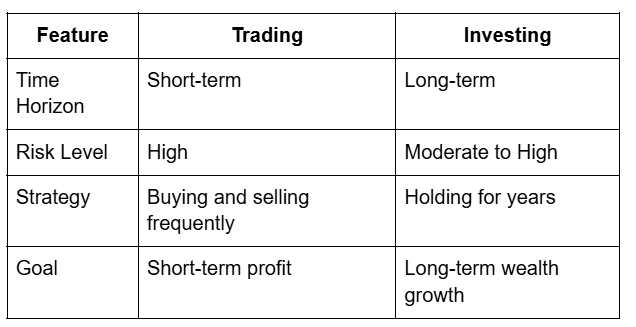ビットコイン取引:初心者向けの戦略、リスク、機会ガイド
ビットコイン取引:戦略、リスク、機会の初心者向けガイド

画像ソース:Gate.comでの暗号通貨取引のコピー方法
ビットコイン取引とは何ですか?
ビットコイン取引とは、ビットコイン(BTC)を購入し、売買して価格の変動から利益を得る実践を指します。個人がビットコインを購入して数年間保有する長期投資とは異なり、トレーダーは短期的な市場の動きを利用しようとします。
ビットコイン取引の仕組み:ステップバイステップガイド
信頼性の高い取引所を選択する-プラットフォームのようなゲート.ioビットコインの取引のための安全な環境を提供します。
口座に入金する – フィアット通貨または暗号通貨を使用して取引口座に資金を入金します。
トレーディング戦略を選択します - デイトレード、スウィングトレード、またはビットコインを保有するかどうかを決定します。
市場を分析する-技術分析と基本分析を使用して、情報に基づいた決定を下す。
取引を行う–取引を実行するためにリミット、市場、ストップロス注文を使用します。
ポートフォリオを監視する–取引を追跡し、市場の動きに基づいて戦略を調整します。
ビットコイン取引戦略の種類
デイトレード
デイトレーダーは1日のうちにポジションを建てたり決済したりし、短期的な価格変動から利益を得ます。
スウィングトレーディング
スイングトレーダーは、中期トレンドを活用して数日から数週間ビットコインを保有します。
スキャルピング
スキャルピングは、1日中に多数の小さな取引を行い、利益を積み重ねることを含みます。
ホドリング
HODL(ホールド・オン・フォー・ディア・ライフ)は、投資家がビットコインを購入し、短期的な価格の波にもかかわらず保持する長期戦略です。
ビットコイン価格変動に影響を与える主要要因
需要と供給の市場-ビットコインの固定供給(2100万枚のコイン)は価格に影響を与えます。
マクロ経済トレンド - インフレ、金利、および経済政策はビットコインの価値に影響を与える可能性があります。
規制ニュース-政府や金融監督機関からの発表が市場センチメントに影響を与えます。
ビットコインのハルビングイベント - これは約4年ごとに起こり、マイニング報酬を削減し、しばしば価格の急騰につながります。
機関投資-大手企業がビットコインに投資すると、その価格は大幅に上昇する可能性があります。
2025年のビットコイン取引のための最高のプラットフォーム
Some of the best exchanges for ビットコイン取引には次のものが含まれます:
ゲート.io- 先進的な取引ツールを備えた主要な暗号通貨取引所。
バイナンス – さまざまな取引ペアと流動性を提供しています。
Coinbase – 初心者向けの使いやすいプラットフォーム。
Kraken – Known for its strong security features.
ビットコインチャートと市場トレンドの読み方
ビットコイン トレーダー は 頼りにしています:
キャンドルスティックチャート - 異なる時間枠での価格変動を表示します。
移動平均-トレンドやサポート/レジスタンスレベルの特定に役立ちます。
相対強弱指数(RSI)- ビットコインが買われすぎまたは売られすぎかを示す指標です。
フィボナッチリトレースメント - 潜在的な反転ポイントを特定するのに役立ちます。
ビットコイントレーダーのリスク管理のヒント
ストップロスとテイクプロフィット注文を設定して、大きな損失から資本を保護します。
ポートフォリオを分散させる-すべての資金を1つの資産に投入しないでください。
感情を抑える - パニック売りや恐怖に基づく決定を避ける。
レバレッジを賢く活用してください – 高いレバレッジは利益を増幅させる一方、リスクも増大させます。
ビットコイン取引で避けるべき一般的な間違い
調査不足 - ビットコインの基本を理解せずに取引すること。
リスク管理を無視すること–ストップロス注文を使用しないこと。
オーバートレーディング – 過度の取引は不要な損失を招く可能性があります。
詐欺には注意してください - 常に のような信頼できる取引所を使用してくださいGate.com.
ビットコイン取引と投資:違いは何ですか?

Gate.comでビットコイン取引を開始する方法
サインアップするGate.com
完全なKYC認証
入金
トレードペアを選択します(例:BTC/USDT)
最初の取引を実行します
より良い戦略のための高度な取引ツールを使用する
結論: ビットコイン取引はあなたに適していますか?
ビットコイン取引は素晴らしい機会を提供しますが、リスクも伴います。初心者であろうと経験豊富なトレーダーであろうと、Gate.comのような信頼できるプラットフォームを使用することが重要です。Gateそして、堅実な戦略に従うことはあなたの成功を高めることができます。今日取引を始めてくださいが、常に責任を持って取引し、リスクを効果的に管理することを忘れないでください。
関連記事

Forkast (CGX): ゲームやインターネット文化向けに構築された予測市場プラットフォーム

Piコインを売却する方法:初心者向けガイド

Radiant Multi-Signature Attackを使用したBybitハックの分析を例に

$MAD: MemesAfterDark – The Ultimate Degen Token

Piノード:誰もが参加できるブロックチェーンノード


